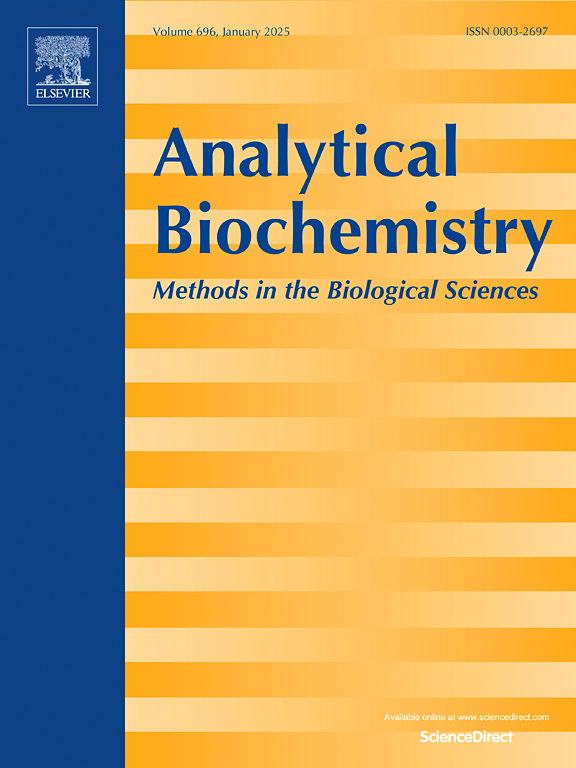Identification of lipid metabolism-related gene markers and construction of a diagnostic model for multiple sclerosis: An integrated analysis by bioinformatics and machine learning
IF 2.6
4区 生物学
Q2 BIOCHEMICAL RESEARCH METHODS
引用次数: 0
Abstract
Background
Multiple sclerosis (MS) is an autoimmune inflammatory disorder that causes neurological disability. Dysregulated lipid metabolism contributes to the pathogenesis of MS. This study aimed to identify lipid metabolism-related gene markers and construct a diagnostic model for MS.
Methods
Gene expression profiles for MS were obtained from the Gene Expression Omnibus database. Differentially expressed lipid metabolism-related genes (LMRGs) were identified and performed functional enrichment analysis. Least absolute shrinkage and selection operator (LASSO), random forest (RF), and protein-protein interaction (PPI) analysis were employed to screen hub genes. The predictive power of hub genes was evaluated using receiver operating characteristic (ROC) curves. We developed an artificial neural network (ANN) model and validated its performance in three test sets. Immune cell infiltration analysis, Gene set enrichment analysis, and ceRNA network construction were performed to explore the role of lipid metabolism in the pathogenesis of MS. Drugs prediction and molecular docking were utilized to identify potential therapeutic drugs.
Results
We identified 40 differentially expressed LMRGs, with significant enrichment in Arachidonic acid metabolism, Steroid hormone biosynthesis, Fatty acid elongation, and Sphingolipid metabolism. AKR1C3, NFKB1, and ABCA1 were identified as gene markers for MS, and their expression was upregulated in the MS group. The areas under the ROC curve (AUCs) for AKR1C3, NFKB1, and ABCA1 in the training set were 0.779, 0.703, and 0.726, respectively. The ANN model exhibited good discriminative ability in both the training and test sets, achieving an AUC of 0.826 on the training set and AUC values of 0.822, 0.890, and 0.833 on the test sets. Gamma.delta.T.cell, Natural.killer.T.cell, Plasmacytoid.dendritic.cell, Regulatory.T.cell, and Type.1.T.helper.cell were highly expressed in the MS group. A ceRNA network showed a complex regulatory interplay involving hub genes. Luteolin, isoflavone, and thalidomide had good binding affinities to the hub genes.
Conclusion
Our study emphasized the crucial role of lipid metabolism in MS, identifing AKR1C3, NFKB1, and ABCA1 as gene markers. The ANN model exhibited good performance on both the training and testing sets. These findings offer valuable insights into the molecular mechanisms underlying MS, and establish a scientific foundation for future research.

求助全文
约1分钟内获得全文
求助全文
来源期刊

Analytical biochemistry
生物-分析化学
CiteScore
5.70
自引率
0.00%
发文量
283
审稿时长
44 days
期刊介绍:
The journal''s title Analytical Biochemistry: Methods in the Biological Sciences declares its broad scope: methods for the basic biological sciences that include biochemistry, molecular genetics, cell biology, proteomics, immunology, bioinformatics and wherever the frontiers of research take the field.
The emphasis is on methods from the strictly analytical to the more preparative that would include novel approaches to protein purification as well as improvements in cell and organ culture. The actual techniques are equally inclusive ranging from aptamers to zymology.
The journal has been particularly active in:
-Analytical techniques for biological molecules-
Aptamer selection and utilization-
Biosensors-
Chromatography-
Cloning, sequencing and mutagenesis-
Electrochemical methods-
Electrophoresis-
Enzyme characterization methods-
Immunological approaches-
Mass spectrometry of proteins and nucleic acids-
Metabolomics-
Nano level techniques-
Optical spectroscopy in all its forms.
The journal is reluctant to include most drug and strictly clinical studies as there are more suitable publication platforms for these types of papers.
 求助内容:
求助内容: 应助结果提醒方式:
应助结果提醒方式:


